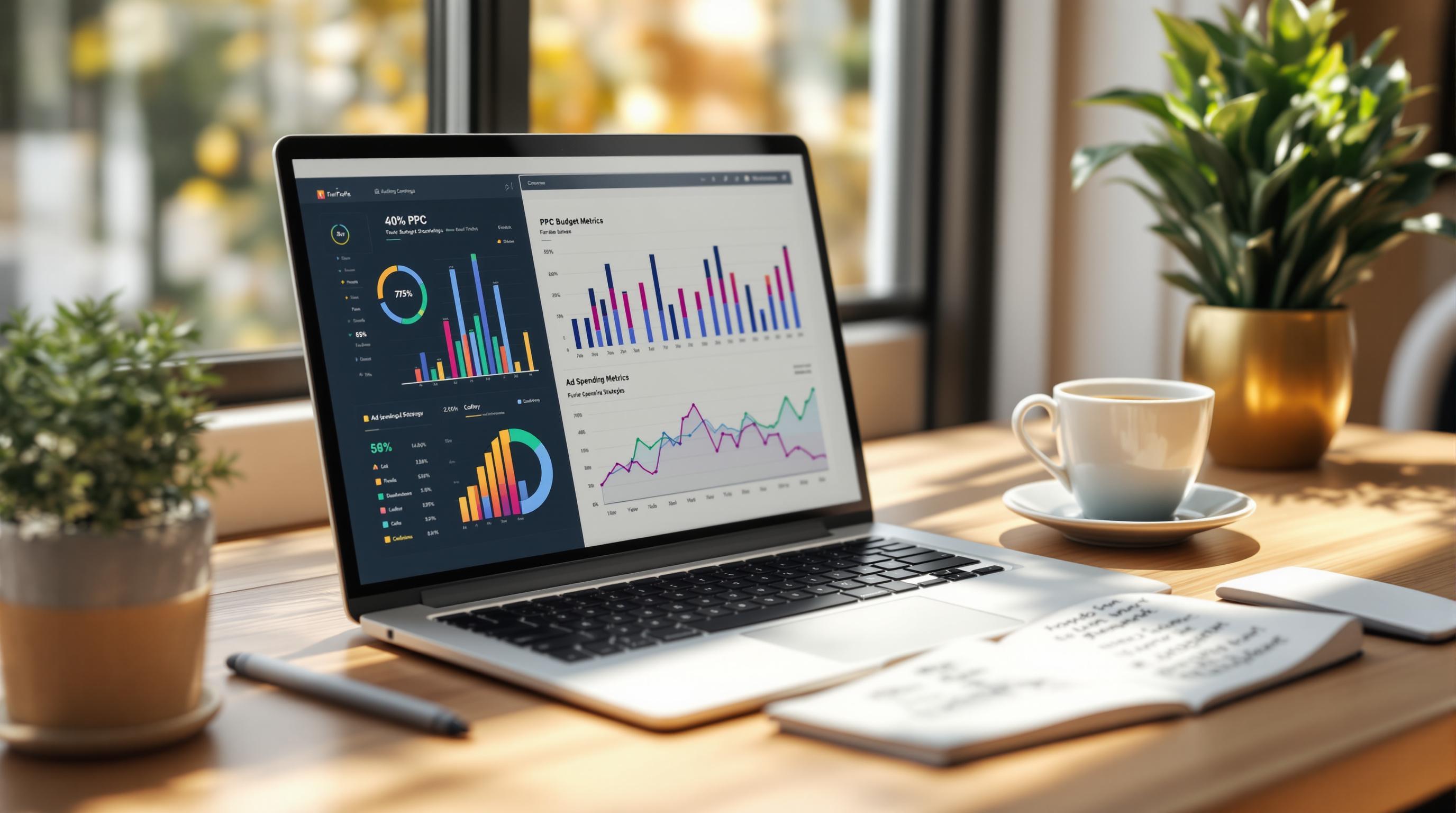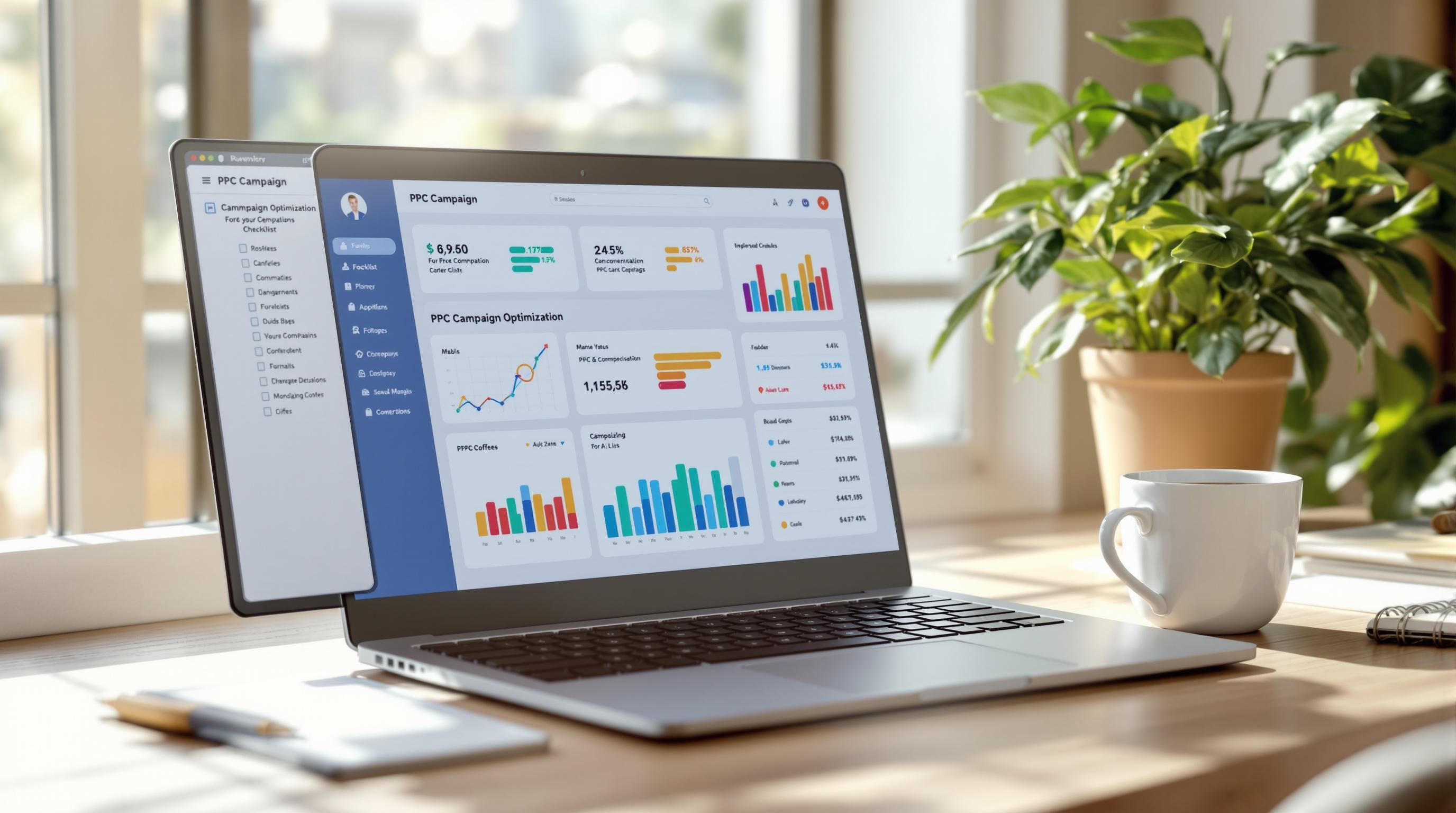Syncing PPC data is critical for accurate campaign performance and decision-making. Here's what you need to know:
- Why It Matters: Syncing tools like Google Ads and GA4 can boost ROI by 25% and reduce errors by 30%.
- Common Challenges: Issues like data fragmentation, platform incompatibility, and manual errors can be resolved with automation and integration tools.
- Top Tools: Platforms like Coupler.io, Supermetrics, and GA4 simplify syncing, while AI-powered tools enhance accuracy and efficiency.
- Privacy Compliance: Focus on first-party data and tools like Google Consent Mode to meet GDPR and CCPA requirements.
- Advanced Strategies: Use AI for predictive analytics and contextual targeting to optimize campaigns without relying on third-party cookies.
Power BI with GA4 Integration Tutorial (2025)
Tools and Platforms for PPC Data Syncing
Using Google Analytics 4 for PPC Data

Google Analytics 4 (GA4) has made tracking PPC data more efficient with its advanced cross-platform tracking features. It provides AI-powered insights that help marketers analyze user behavior across devices and touchpoints, making it easier to fine-tune campaign performance.
Here are some standout GA4 features for PPC data syncing:
| Feature | Benefit |
|---|---|
| Cross-Platform Tracking | Tracks the entire user journey |
| First-Party Data Integration | Ensures privacy-compliant tracking |
Third-Party Tools for Automation
Automation tools play a big role in simplifying PPC data syncing. Below are some popular options:
| Tool | Primary Function |
|---|---|
| Coupler.io | Syncs data in real-time |
| Looker Studio | Creates custom dashboards |
| Supermetrics | Connects multiple platforms |
| Adverity | Provides AI-based analytics |
While these tools make syncing easier, always check for compatibility and compliance when integrating them into your workflow.
Integrating Data Across Platforms
Bringing data together from different platforms requires careful coordination. For instance, Google Ads and Meta Ads now offer advanced integration capabilities, allowing seamless data flow through APIs.
If you're looking for expert help, the Top PPC Marketing Directory (ppcmarketinghub.com) is a handy resource for finding tools and services tailored to your needs.
Key considerations for integration:
| Aspect | Requirement | Solution |
|---|---|---|
| Data Format | Consistent structure | Use API connectors |
| Update Frequency | Frequent updates | Automate syncing schedules |
| Privacy Compliance | GDPR/CCPA adherence | Focus on first-party data |
| Data Validation | Ensure accuracy | Use automated monitoring |
These tools and strategies pave the way for smarter, more efficient data syncing, as explored further in the next section.
sbb-itb-89b8f36
Practices for Effective PPC Data Syncing
Ensuring Data Accuracy
Keeping your data accurate is crucial for PPC campaigns. Regular audits help catch and fix errors, especially as your data sources and platforms become more complex.
| Audit Component | Purpose | Frequency |
|---|---|---|
| Data Validation | Keep formatting consistent | Daily |
| Source Verification | Cross-check with source data | Weekly |
| Historical Analysis | Spot trends and anomalies | Monthly |
| Cross-Platform Reconciliation | Maintain consistency across platforms | Bi-weekly |
Beyond audits, automation tools can help reduce manual errors and make syncing processes more efficient.
Using Automation for Efficiency
Automation tools powered by AI can save time and cut down on human errors. Here are some common uses:
| Automation Type | Primary Benefit | Example Use |
|---|---|---|
| Data Transfer | Lowers manual input errors | API integrations |
| Validation Checks | Maintains data integrity | Automated checks |
| Report Generation | Saves time and effort | Scheduled reporting |
| Error Detection | Flags inconsistencies early | Real-time alerts |
While automation simplifies tasks, staying compliant with privacy regulations is equally important.
Complying with Data Privacy Laws
With regulations like GDPR and KVKK in place, privacy compliance is a must for PPC data syncing. Here are some key measures:
| Requirement | Implementation | Benefit |
|---|---|---|
| Consent Management | Integrate tools like Google Consent Mode | Meet legal requirements |
| Data Minimization | Collect only what's necessary | Lower liability risks |
| Security Protocols | Use encrypted data transfers | Protect user information |
| Access Controls | Apply role-based permissions | Improve data security |
According to a Google study, using GA4's Data Import boosted data accuracy by 25% while staying compliant with privacy laws [1].
If you're looking for specialized tools or expertise, check out the Top PPC Marketing Directory (ppcmarketinghub.com) for privacy-compliant solutions and expert services.
Advanced PPC Data Syncing Strategies in 2025
AI and Machine Learning in Data Optimization
AI-powered tools are transforming PPC data syncing with predictive analytics and real-time adjustments. Research from Encoders Studio shows that using AI-driven PPC automation can lead to a 25% boost in campaign ROI [2].
| AI Capability | Implementation | Impact |
|---|---|---|
| Predictive Analytics | Analyzes trends and adjusts campaigns dynamically | Better ROI and campaign results |
| Anomaly Detection | Monitors data patterns in real time | Identifies issues early |
| Automated Syncing | Uses API-based data integration | Minimizes manual errors |
AI also enables faster adaptation of ad content by analyzing performance data instantly and suggesting audience-specific changes. However, the success of these tools depends heavily on the quality of the data they process. As AI continues to streamline data syncing, contextual targeting emerges as a privacy-friendly way to use these insights in a world moving away from cookies.
Contextual Targeting Without Cookies
Contextual targeting has proven effective, delivering 30% higher ad engagement and 25% better conversion rates in campaigns that use AI-driven contextual matching for ad placements [1].
| Targeting Element | Strategy | Benefit |
|---|---|---|
| Location and Device | Uses location and device data | Privacy-friendly insights |
| Content Analysis | AI-based contextual matching | More precise targeting |
| First-Party Data | Relies on direct user interaction data | Ensures privacy compliance |
| Real-Time Signals | Adjusts content in real time | Boosts performance |
By combining first-party data with AI tools, marketers can execute contextual targeting strategies with greater accuracy. For instance, a retail brand working with The Graygency achieved impressive results:
Their approach led to a 50% increase in sales and a 30% rise in ROI by integrating AI-powered data syncing with contextual targeting [3].
For those looking to explore specialized tools, the Top PPC Marketing Directory (ppcmarketinghub.com) provides a curated list of AI-driven platforms and contextual targeting solutions tailored for advanced PPC strategies.
Conclusion and Resources
Key Points
Combining precise data syncing with AI-powered tools can significantly improve campaign outcomes. A study from Zeo.org emphasizes the importance of accurate data management for successful PPC campaigns in 2025, particularly in formats like Performance Max and Advantage+ [1].
| Key Component | Impact | Strategy |
|---|---|---|
| Data Accuracy | Cuts errors by 40% | Conduct regular audits and use automation |
| Privacy Compliance | Meets GDPR/KVKK rules | Use privacy-focused data collection |
| AI Integration | Increases ROI by 25% | Automate bids and optimize performance |
Explore the Top PPC Marketing Directory
For marketers aiming to apply these strategies, specialized tools and services can be a game-changer. The Top PPC Marketing Directory (ppcmarketinghub.com) is a go-to resource for discovering tools that support data syncing and campaign management. This directory includes resources across various categories:
| Category | Examples of Tools and Services |
|---|---|
| Campaign Management | Tools for bid optimization and budget planning |
| Data Integration | Solutions for syncing across platforms |
| Performance Tracking | Platforms for analytics and reporting |
| Privacy Compliance | GDPR-compliant data management tools |


